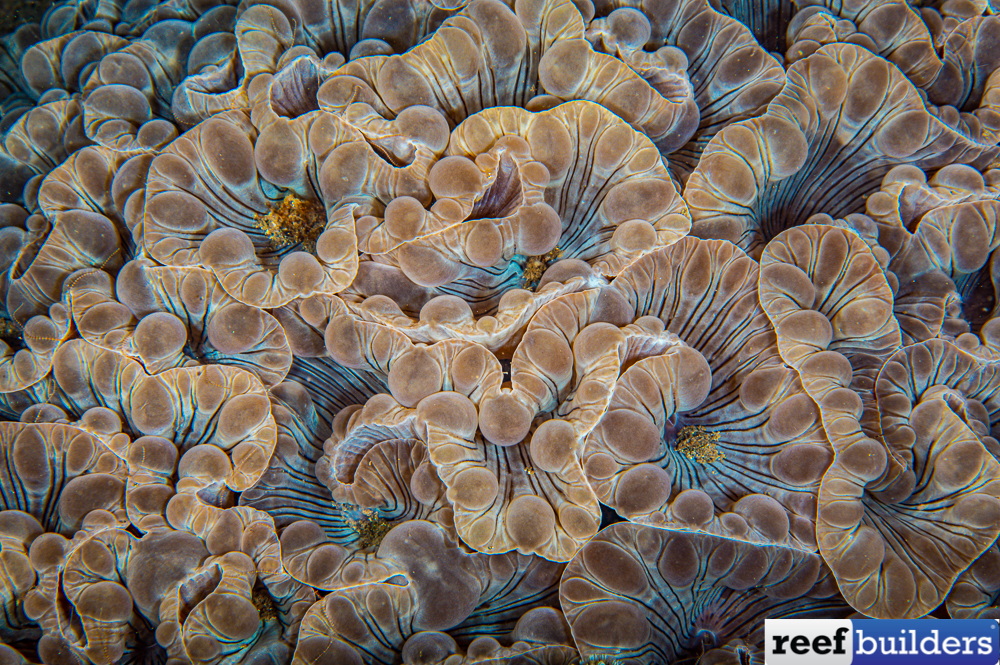The fox coral has one of the most unique polyp shapes of any coral and it’s a real treat for coral divers to see underwater. As you know, we like to explore reef areas where not many divers go because unfortunately, the weird, rare and extravagant corals do not enjoy the classic dive sites that are crystal clear water and packed with fish. So our diving trips usually take a left turn and require special organization in order to chart our own path underwater.
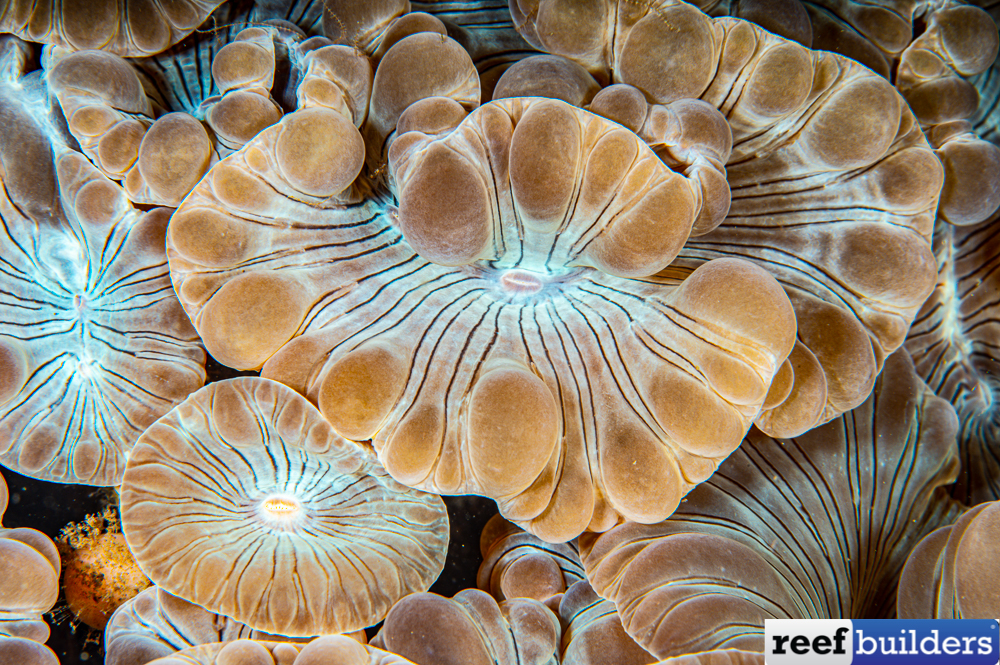
We have a special fondness for turbid, deep inshore reefs, lps heaven – not really diver’s heaven, but certainly coral heaven. Sometime we get lucky with a little better than usual visibility at these kind of reefs but when this happens, it becomes magic! North Sulawesi is a special place for this very particular purpose. On a recent survey of Acropora conditions in North Sulawesi we got lucky enough to dive quite a few very particular inshore reefs.
On a couple of them, in the deeper section, we were greeted with the very rare bubble fox coral Nemenzophyllia turbida. Although not the most colorful coral in the ocean, it is nevertheless, for the coral freaks like us a real jewel. The leafy, flattening, striped, bubbly coral tissue expanding out of this thin, meandrous skeleton is a real coral delight.
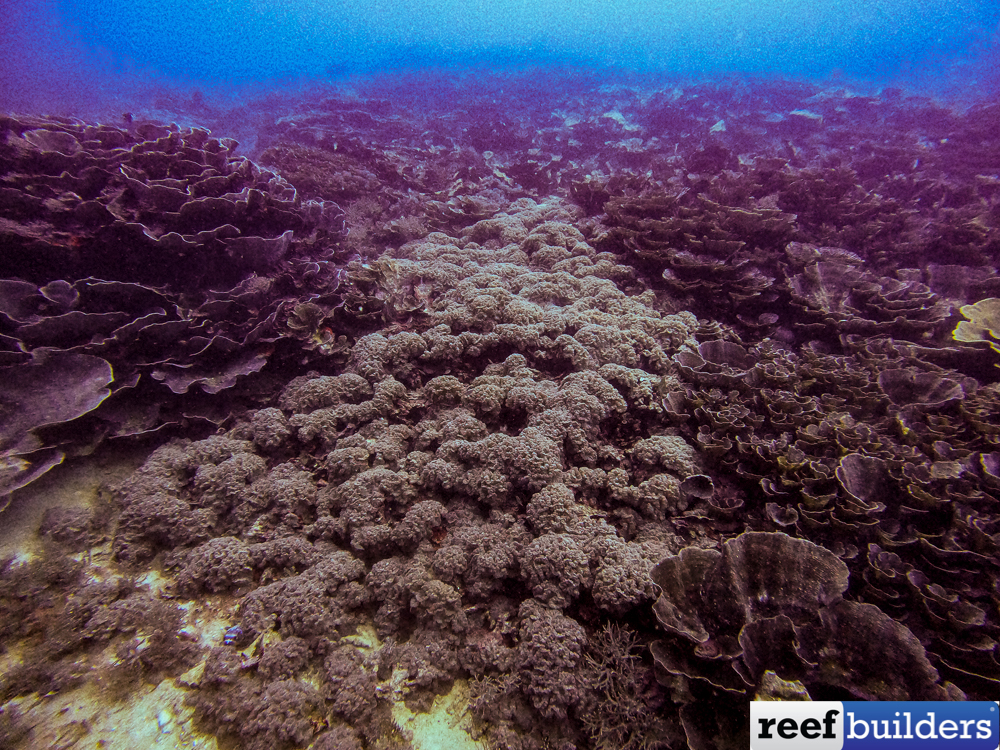
We were lucky to find a pretty large colony flowing down a massive Pachyseris speciosa reef, in a very turbid bay and by 90 ft (30m) deep. We’ve seen this coral in other inshore reefs, in smaller colony size, but always below 60 ft (20 m) deep.
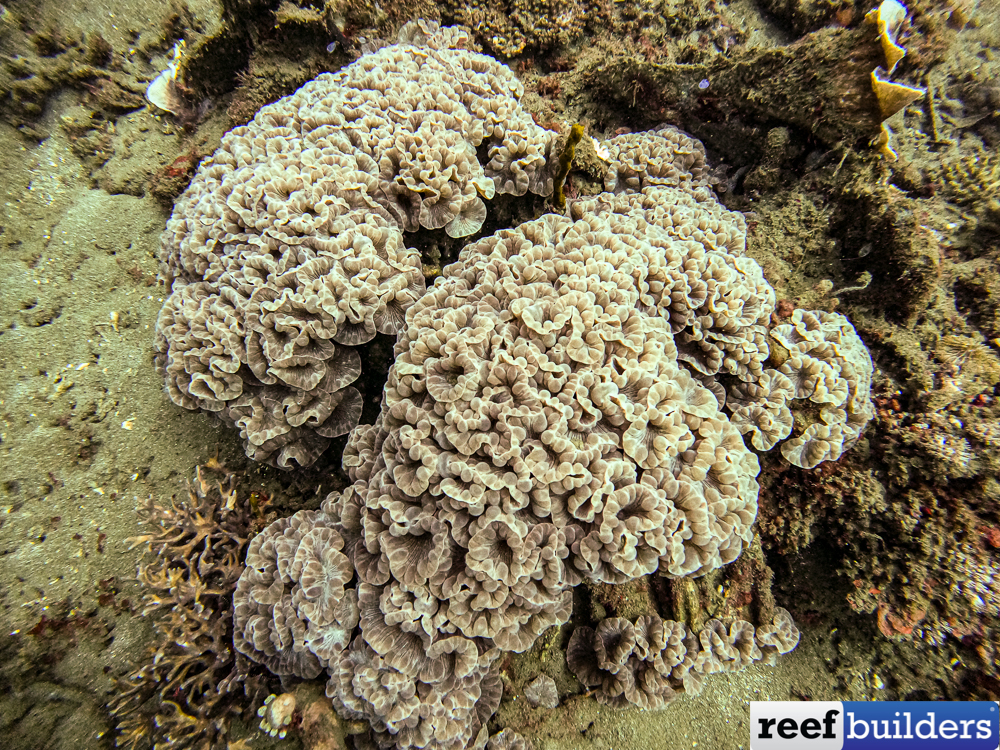
The polyps of Nemenzophyllia turbida, are quite unique. First Of All, it’s a monospecific genus, with only one species. There is just a very similar species in a close genus: Plerogyra discus, but an important skeletal morphologic character separates them. The flat, leafy and bubbly appearance of this species is delightful and morphologically adapted to expose as much zooxanthellae-filled tissue to depth diminished sun light. But at the same time, the slightly cup shaped, mucus filled polyps are a perfect food trap for these very turbid location, where light is scarce but food plentiful, concentrated and settles down well.

These very unique corals are not really popular in the diving and reefkeeping world but we still find them fascinating. There are very few color varieties of Nemenzophyllia and some develop a bit of Green Fluorescent Protein pigment under aquarium conditions making them a little bit more attractive to coral enthusiasts. Their growth is surprisingly fast to the LPS standard, when given the right conditions, thus making it a very good candidate for cultivation.
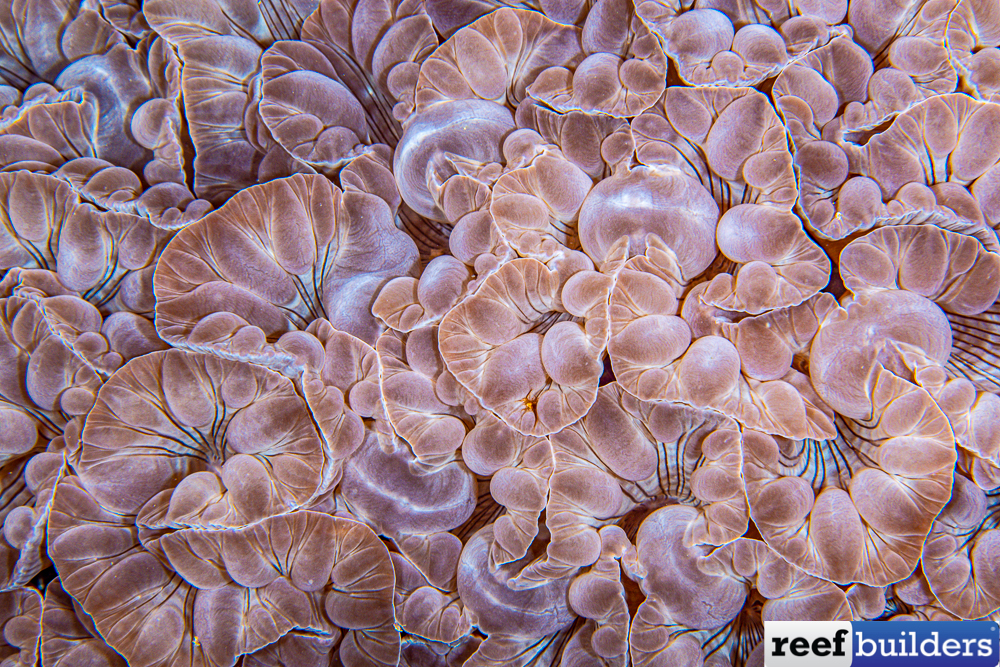
We are still in the search of the more elusive Plerogyra discus, which has very similar mantle but bigger polyps, and lacks a central skeleton columella (Skeletal structure feeling the polyp center below the mouth).


